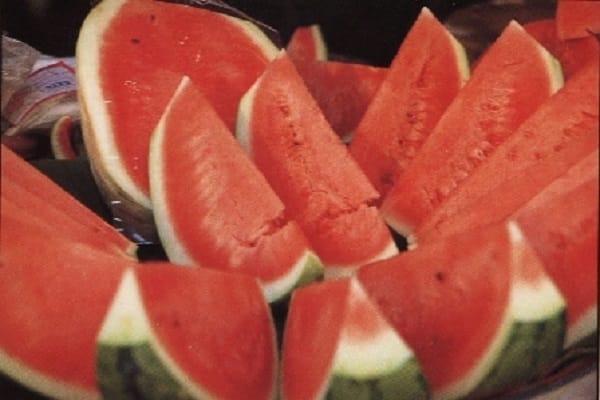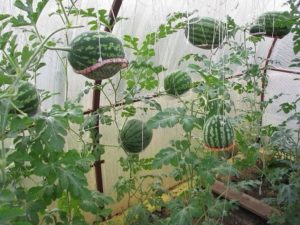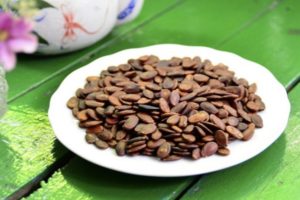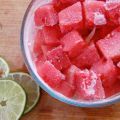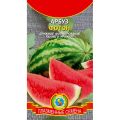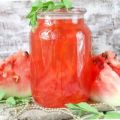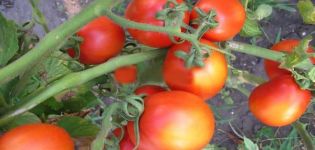Description of the Ataman watermelon variety and the F1 hybrid, what are the differences, diseases and plant pests
Watermelon is one of the brightest and most beloved berries of the summer season. The Ataman watermelon variety is popular among gardeners, as it combines yield, disease resistance and excellent taste.
Characteristics and description of watermelons Ataman and Ataman F1
Watermelon Ataman from among modern hybrids of early ripening. The fruits ripen with direct sowing of seeds into the soil 55-65 days after germination, and when erected by seedlings in 40-45 days. The plant is a powerful bush, characterized by intense vigor and developed leaf apparatus.
Comfortable conditions contribute to the formation of 4-5 fruits with a weight of 12-16 kg each. The smooth oval-shaped berries are dark green with light stripes. Under the strong springy bark there is a grainy, bright red pulp with a sweet, excellent taste, good consistency. The sugar content of the berry is about 7%.
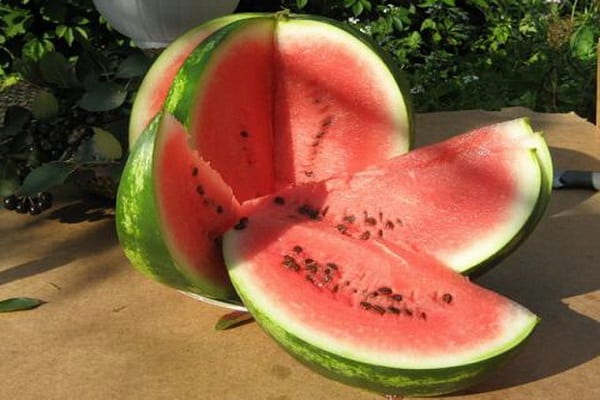
The Ataman F1 watermelon variety is a Dutch hybrid. It takes 55-65 days to ripen. The plant forms a powerful bush that can bear up to five ovaries. Fruits are spherical or slightly flattened. The rind is moderately thick. The pulp is characterized by juiciness, and the grains are small.
Sugar accumulation depends on weather conditions and is about 6.5%.
The description of the culture assumes the designation of the pros and cons of the Ataman and Ataman F1 watermelon varieties. The main advantages, thanks to which the plant has earned its place in the garden, include:
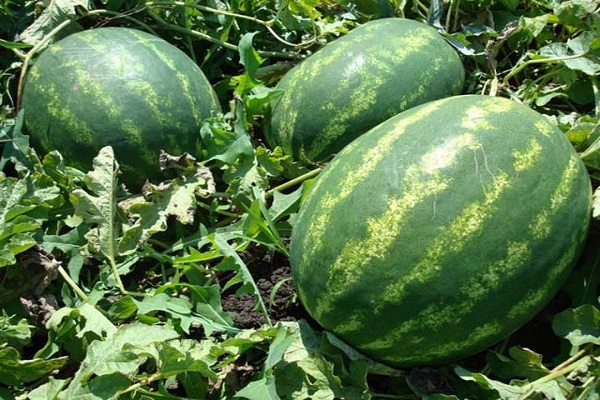
- high yield, which, under favorable conditions, is 215 centners per hectare;
- excellent taste and technological characteristics;
- resistance to such common diseases / as fusarium, anthracosis;
- the possibility of growing both in greenhouse conditions and in the open field;
- good transportability due to the thick and strong skin of the fruit;
- the safety of the crop for a month without loss of taste.
Minor disadvantages are the dependence on weather conditions and the regular demanding watering.
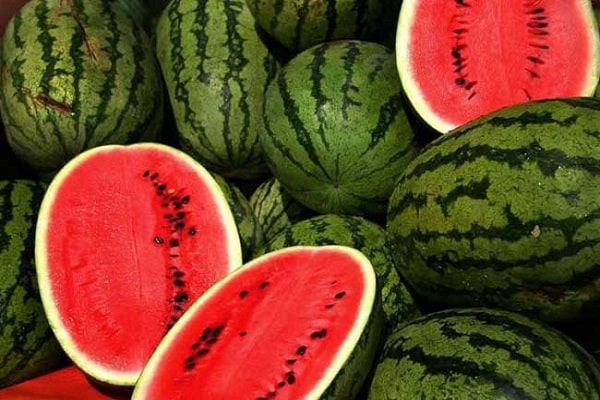
What are the differences
The Ataman variety retains all the qualities of the plant in the next offspring. You can collect seeds in your garden and safely plant them next year. Ataman F1 is distinguished by more amicable seedling formation, leveled plants, high quality and uniformity of fruits and genetic resistance to diseases. But unlike Ataman with Ataman F1 it is impossible to harvest seeds, as there is a risk of being left without a crop.Therefore, the seeds of this variety will need to be bought in the store every year.
We provide conditions for good yields
Watermelons Ataman prefers bright sun in the daytime, warmth at night and loose sandy soil in the root zone and in the area of the root collar.
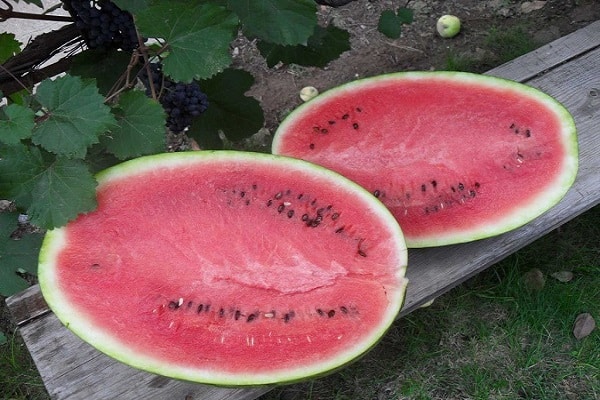
Soil composition
Ataman watermelon needs sandy, well-aerated soil. In the presence of heavy soil, it is necessary to perform high-quality preparation by deep plowing to increase yields. Flooded, clayey and poorly heated areas should be avoided.
Humidity and watering
When growing, it is necessary to create comfortable conditions for watermelons, among which watering takes first place. Bushes experiencing a moisture deficit will begin to develop worse, and excessive watering will provoke rotting of the whips, and the berries themselves will lose their sugar content. Accordingly, it is required to organize the correct watering, which should be carried out at the root and using warm water. In the case of long rainy days, cover the plantings using film, since the crop reacts painfully to high humidity.

2 weeks before harvesting, you need to abandon watering so that the berries can collect the right amount of sugars, and the pulp does not become watery.
Top dressing
Ataman watermelon is responsive to feeding. Nutrients should be introduced when the first true leaves are formed, using fertilizers that contain nitrogen and phosphorus. Then you need to saturate with minerals and organics. The feeding schedule must be adjusted. Most often, the frequency of application with fertilizer solutions is 14 days.

At the time of mass flowering, the plant needs compositions based on potassium and phosphorus. It is recommended to finish feeding at the first signs of berry ripening.
Agrotechnical features of growing
The seeds of the Ataman watermelon variety are sown into the ground or seedlings are grown from them, followed by planting with mulching of the plantings and covering through arcs with a synthetic film.
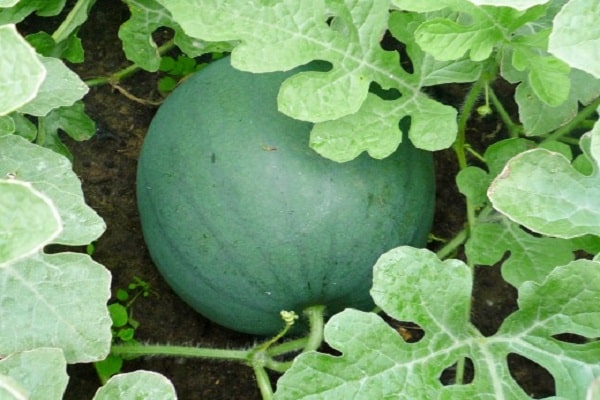
In the greenhouse
The first condition for growing watermelon in a greenhouse - a well-prepared room. In a heated greenhouse, seedlings or seeds can be planted in the last days of February until mid-March.
The soil must be nutritious and rich in minerals. Humus with superphosphate will serve as fertilizer. In advance, you should take care of the presence of a protective film in case of severe cold weather.

Having prepared everything you need for growing, you can start the process itself:
- Sow the seeds in separate containers with a diameter of 10 cm, after soaking them in warm water with a growth stimulator.
- During growth, water, cover with foil and maintain a temperature of 25 ° C.
- Apply fertilizer on the 10th day after sowing using complex mineral compositions.
- At the end of May, transplant the seedlings into well-warmed soil, keeping a distance of 50-70 cm, and maintain the temperature in the greenhouse from 20 to 25 ° C, and the humidity not higher than 60%.
Further care is reduced to airing and watering, as well as maintaining the temperature in the greenhouse at 20-25 ° C and humidity at 60%.
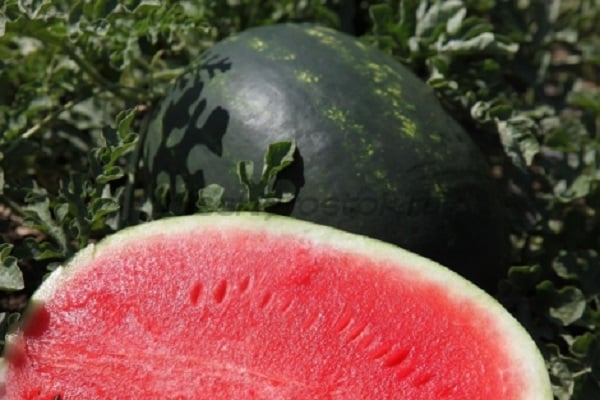
Outdoors
Before planting a watermelon Ataman, you need to choose the right area, which should be spacious and well-lit by the sun. Planting in a seedless way at the first stage includes loosening and fertilizing the soil on the site. Also, the seed must be moistened in warm water, and then sown into grooves 4-7 cm deep.
The distance between the planted units should be from 0.7 to 2 meters, and between the rows - 1.5 meters.
The seedling method of growing requires the following actions:

- Take individual containers measuring 10 cm in diameter and 12 cm in height and fill them with soil containing peat and humus in equal proportions.
- Place two seeds in each container to a depth of 3 cm. When the seedlings are formed, the weak must be removed.
- Germinate the plant at a temperature of 20-25 C during the day and 18-20 C at night for 3 weeks. Also provide the necessary amount of light, regularly ventilate and protect from drafts.
- When warm weather comes, transplant the seedlings into open soil, sheltering them from the wind, watering and feeding them.
After planting, you need to surround the plants with care: water, fertilize, loosen the soil, remove weeds, and also protect against diseases and pests.
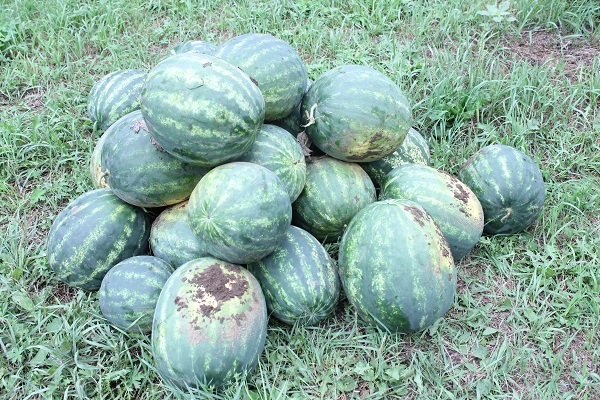
Diseases and pests. Ways to deal with them
Watermelon Ataman is not immune from diseases and pests. The culture is prone to fungal and bacterial diseases. Especially this situation worsens in the rainy period, with a decrease in temperature indicators. The fungus affects the greenery of the bushes, roots and fruits. Anthracosis, powdery mildew, root rot, bacterial spotting, fusarium wilting are considered dangerous for watermelon.
Insects, such as wireworms, spider mites, melon aphids, and thrips, also pose a threat to the harvest. They mercilessly destroy culture, feeding on roots, foliage, and many of them are not averse to enjoying the fruits.
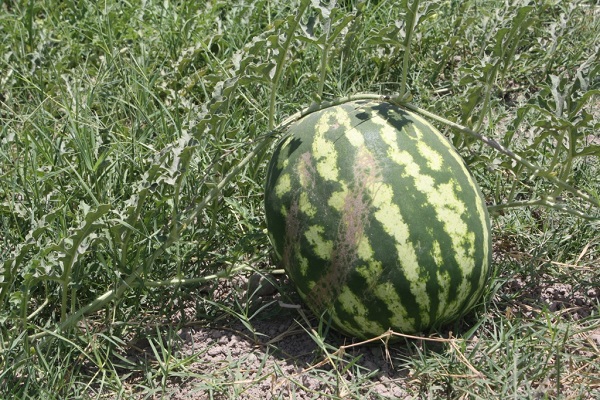
To protect a crop from diseases and pests, the main thing is not only to create and maintain an optimal microclimate and a minimal infectious environment. This requires:
- destroy weeds on the site, remove plant residues;
- alternate crops;
- regularly inspect the bushes for signs of diseases and pests, and if a problem is detected, promptly take appropriate measures by treating with specially designed drugs, observing the dosage recommended by the manufacturer when preparing protective equipment.
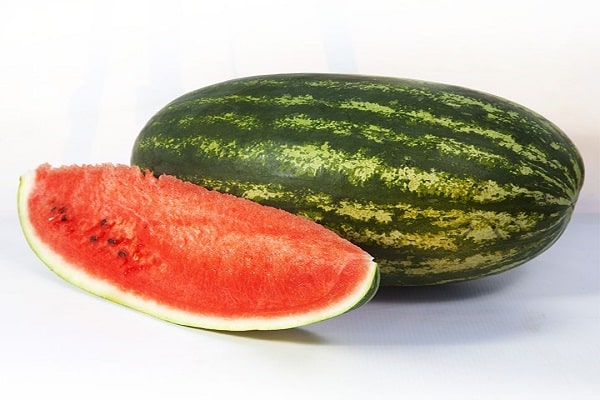
Harvesting
The signal for harvesting the Ataman watermelon variety will be external indicators that indicate maturity:
- discoloration or the formation of a waxy coating on the skin;
- soil spot of rich yellow color;
- resonance when tapped, although this is not always considered an indicator that the watermelon has reached its maximum flavor;
- dryish tendril at the peduncle.
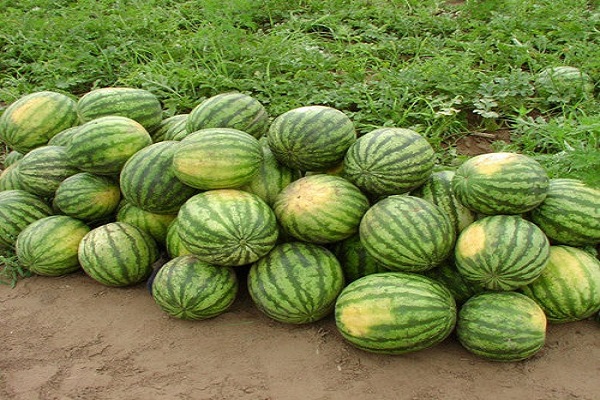
Harvesting must be done with extreme care to avoid beating and damaging the skin. It is better to cut the fruit off the stem rather than tear it off and twist it off. In the process of separation, there is a risk of bacteria getting into the watermelon, which can provoke rotting of the pulp.
The Ataman watermelon should be used within 2-3 weeks after removal, as the flesh will lose its crispness. Store in a room with an optimal temperature of 10-15 ° C and a relative humidity of 85-90%.
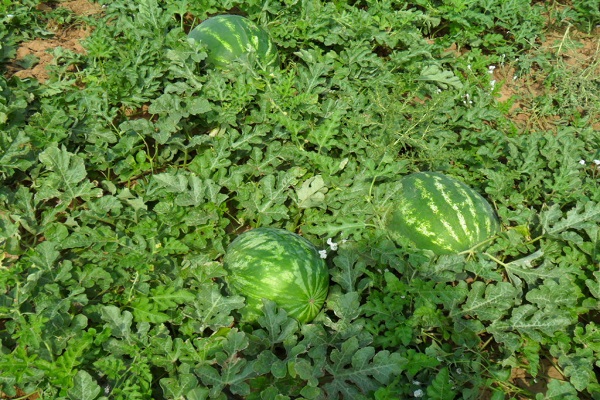
Conclusion
The key to successful cultivation of Ataman watermelon is sunny warm weather, when pollination and the development of sugary juicy fruits are actively taking place. To get quality products, you need to make some effort, and also take into account some of the features of this culture. The main thing is to provide the plant with favorable conditions and enjoy the exquisite taste of healthy and sweet berries.
